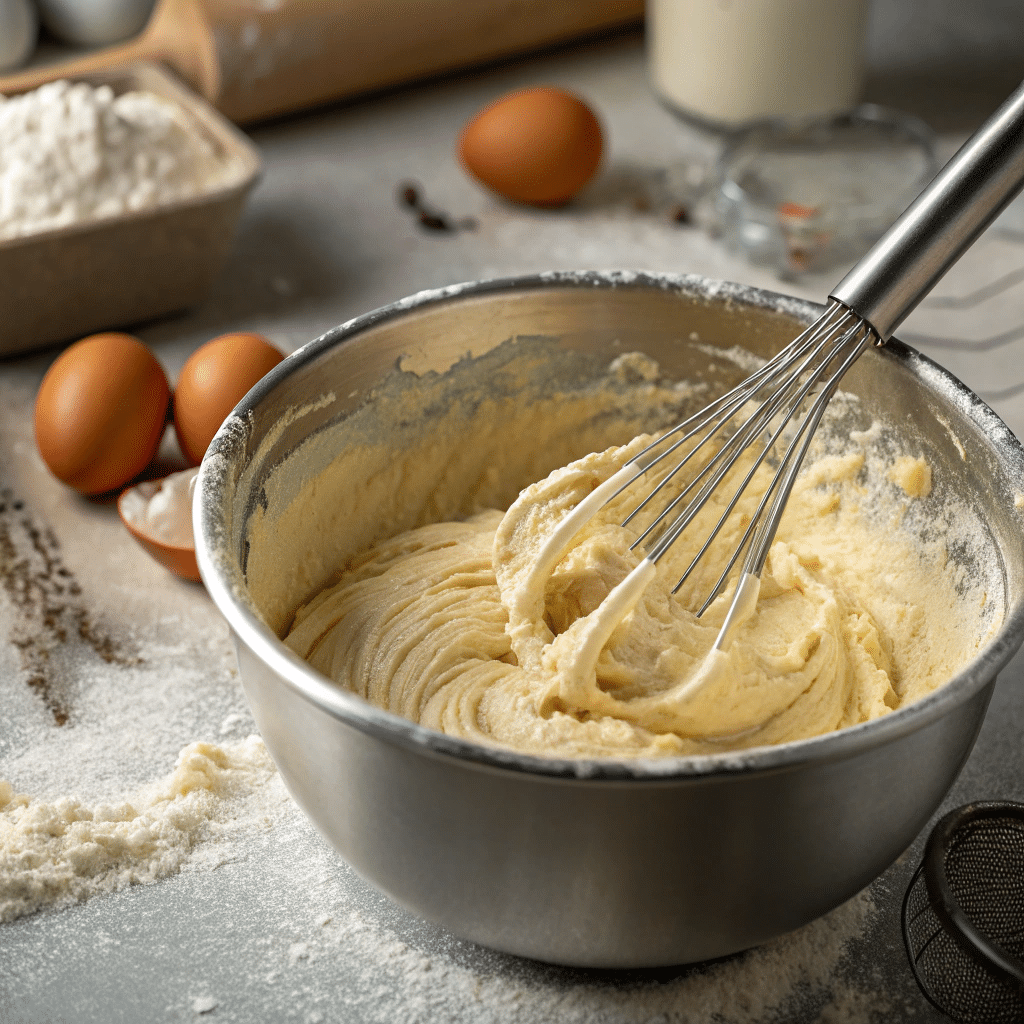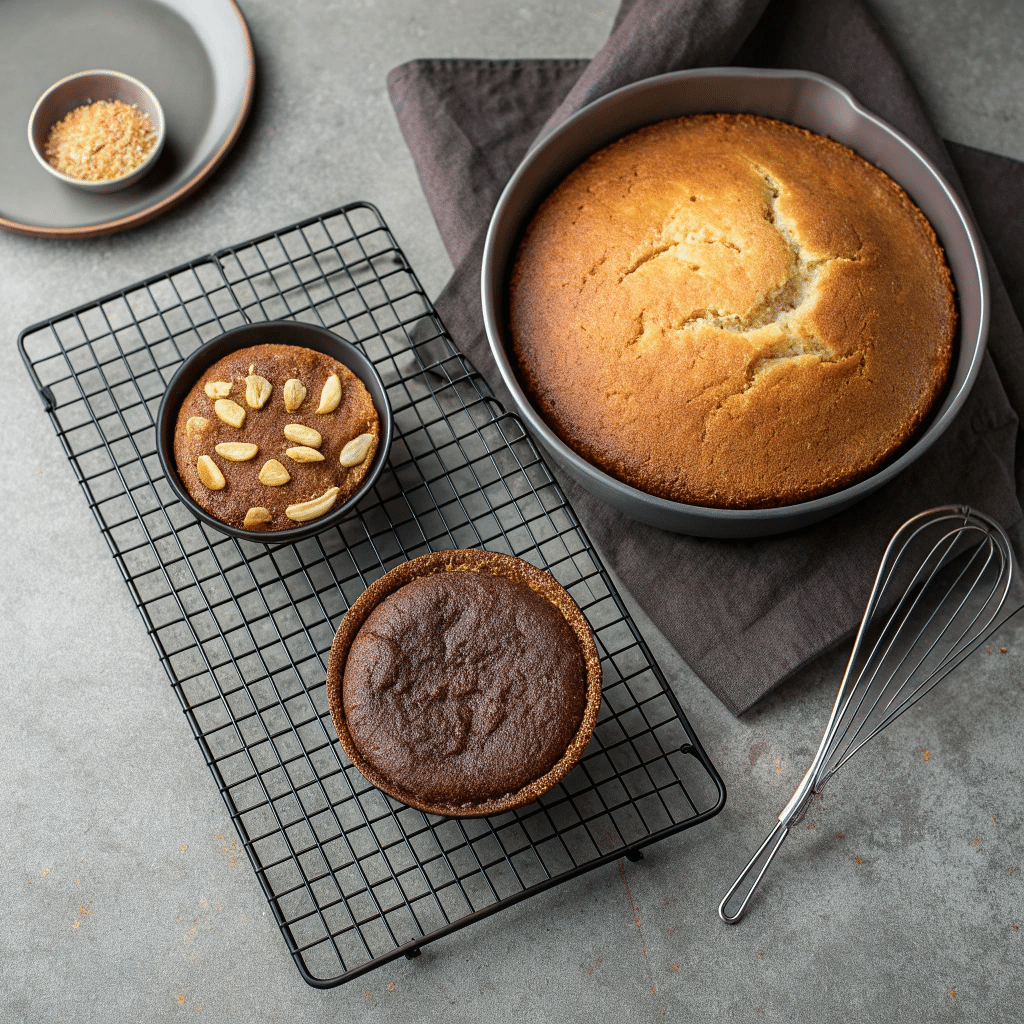You pull your cake out of the oven, only to find a sad crater right in the middle. Sound familiar? Few things are more frustrating than waiting for that golden, fluffy sponge to rise, only for it to cave in the center like a deflated balloon. Trust me, I’ve been there too.
Let’s dig into why cakes sink in the middle, how to prevent it, and what you can do if your cake doesn’t go as planned. This guide is part troubleshooting, part therapy—because sometimes, bad cakes happen to good bakers.
The Main Reasons Why Cakes Sink in the Middle
Every cake tells a story. If yours fell flat, here’s what might have happened:
1. The Cake Batter Was Overmixed

Think of cake batter like a delicate handshake—it doesn’t need to be crushed. Overmixing develops too much gluten, leaving the cake heavy. The outside sets, but the inside can’t hold itself up.
Fix: Mix just until the ingredients combine. I like to stop as soon as the flour disappears into the wet mixture.
2. Oven Temperature Issues
Ovens are like people—they all have quirks. Too hot, and the outside bakes too quickly, trapping steam. Too cool, and the cake never sets in time. Both can leave the middle weak and sunken.
Fix: Use an oven thermometer. Don’t just trust the dial. Even a 10–15 degree difference can make or break a sponge.
3. Opening the Oven Door Too Soon
You know the saying: curiosity killed the cat? Well, it can also kill a cake. Opening the oven door too early releases heat and causes the cake to collapse.
Fix: Resist the urge to peek until at least ¾ of the bake time has passed.
4. Incorrect Pan Sizes
Pan size isn’t just about aesthetics. Too small, and your cake might dome and sink. Too big, and the batter spreads too thin, leading to a flat, sad sponge.
Fix: Always use the pan size your recipe calls for. If you need to swap, adjust baking times accordingly.

5. Too Much Leavening Agent
Baking powder and baking soda are powerful, but too much is like filling a balloon with too much air—it pops. Excess gas can cause the cake to rise quickly, then collapse in the middle.
Fix: Measure with care. A little extra can cause a lot of drama.
6. Underbaking
A half-baked cake might look fine on the surface, but the center is still liquid. Once it cools, gravity takes over and the middle caves in.
Fix: Use the classic toothpick test. If it comes out with wet batter, it’s not ready.
7. Too Much Moisture
Extra eggs, milk, or even juicy fruits can throw off the balance. A wet batter can’t set properly, leaving the middle soft and sinking.
Fix: Stick to the recipe. If adding fresh fruit, toss it lightly in flour first to prevent excess moisture from pooling.

How to Prevent Cakes From Sinking in the Oven
Knowing what went wrong is half the battle. Here are practical baking tips to keep your cake from sinking in the pan:
- Room Temperature Ingredients: Cold eggs or butter can mess with the batter’s structure. Let them sit out before mixing.
- Measure Accurately: Baking isn’t a guessing game. Use proper measuring cups and a scale if possible.
- Don’t Overdo the Leavening: Follow the recipe amounts exactly.
- Check Oven Placement: Bake cakes in the center of the oven for even heat.
- Be Patient: Let the cake finish baking before you test or move it.
The Doming Dilemma
Sometimes, cakes don’t sink—they dome like a mountain. That’s the opposite problem, but it comes from the same culprit: uneven heat.
If you’re wondering how to prevent cake from doming, here’s the trick: lower the oven temperature slightly and bake a little longer. You can also use baking strips around the pan to help the cake rise evenly.
What To Do With a Sunken Cake

Okay, so your cake sank. Before you toss it, consider these rescue missions:
- Make Cake Pops: Crumbled cake plus frosting = the cutest little treats. If you’ve ever wondered cake pops how to make, this is your moment.
- Turn It Into a Cake Dip: Mix the crumbled sponge with cream cheese or whipped cream for a sweet dip. Perfect for fruit or cookies.
- Frost Creatively: A little extra buttercream can cover the dip in the middle. Nobody has to know.
- Layer Trickery: Slice off the top, flip it over, and fill the dip with frosting, ganache, or fruit. Suddenly, it’s a deliberate design.
Remember, there are no bad cakes—just “experimental” ones.
Sponge Cake Recipes That Won’t Let You Down
If you’re nervous about another flop, start with forgiving recipes. Sponge cake recipes are light, airy, and surprisingly easy if you nail the basics.
Here are a few pro tips:
- Use a gentle folding motion for the batter.
- Keep eggs at room temperature.
- Don’t rush the cooling process—move too quickly, and condensation on cakes will make them soggy.
Baking Tips I Swear By
Let me share a few personal tricks I’ve learned after too many sink-in moments:
- Preheat the Oven: Always give it a good 10–15 minutes.
- Avoid Overcrowding: One cake in the middle is better than three fighting for space.
- Don’t Rush Cooling: Place your cake on a wire rack. Leave the pan for a few minutes, then carefully release.
- Don’t Panic Over Small Sinks: A tiny dip can actually hold more frosting. Win-win.
Wrapping It Up
Every baker has had a cake sink in the middle at least once. It doesn’t mean you failed—it means you learned. With a little attention to batter mixing, oven temp, and pan size, you’ll be turning out beautiful, fluffy cakes in no time. And if things still go sideways? That’s what cake pops are for.
After all, baking is as much about the journey as the dessert. So preheat that oven, grab your favorite pan, and remember: even a bad cake is still cake.
Quick FAQ: Why Do Cakes Sink in the Middle?
Q: Why did my cake sink in the middle after baking?
A: Most often, it’s underbaked or too much leavening. Check oven temp and ingredient ratios.
Q: How do I keep cake from sinking in pan?
A: Use the right pan size, bake at the right temp, and don’t open the oven too early.
Q: Can I fix a sunken cake?
A: You can’t make it rise again, but you can repurpose it into cake pops, trifle, or a frosted masterpiece.
Q: How do I prevent condensation on cakes after baking?
A: Let them cool fully before wrapping or frosting. Store in a cool, dry spot.
Q: Is a sunken cake safe to eat?
A: Yes. Texture might be off, but it’s perfectly edible.

